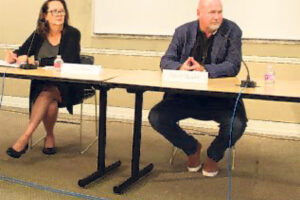The issue of bullying in Camas schools came to a head recently, after a Camas High teen sentenced to one year probation for making death threats at his school told police he had threatened to shoot classmates in jest after those students bullied him.
In the days following the teen’s sentencing and withdrawal from Camas High, several community members and parents took to social media sites and school board meetings to ask what Camas School District leaders were doing to prevent and treat cases of bullying within Camas schools.
Camas resident and former school board member Dave Lattanzi spoke about bullying at a March 12 Camas School Board meeting, and presented results from the 2016 Washington State Healthy Youth Survey, which showed that 27 percent of Washington sixth-graders, 27 percent of eighth-graders, 21 percent of sophomores and 17 percent of seniors reported being bullied at school within a month of the survey.
Lattanzi told school board members the issue isn’t limited to the Camas School District, and that something needs to change.
District leaders say they take all bullying and harassment reports very seriously. The district has an official Harassment, Intimidation or Bullying (HIB) form that can be turned in by a student, parent or concerned adult regarding anything from name-calling to physical harassment. District policy requires an administrator to notify families of involved students no more than two days after receiving the HIB report, complete a formal investigation within five school days and inform involved families of the investigation results within two days of the investigation’s end. School administrators must implement corrective measures no later than five school days after notifying families of the investigation results.


